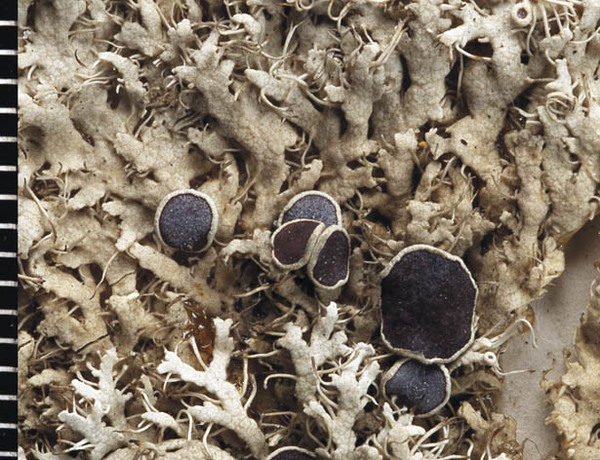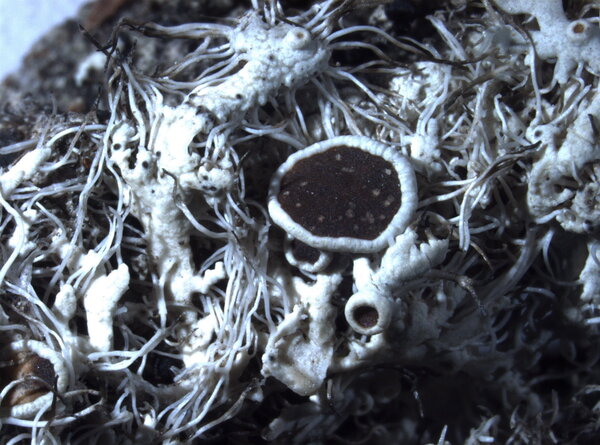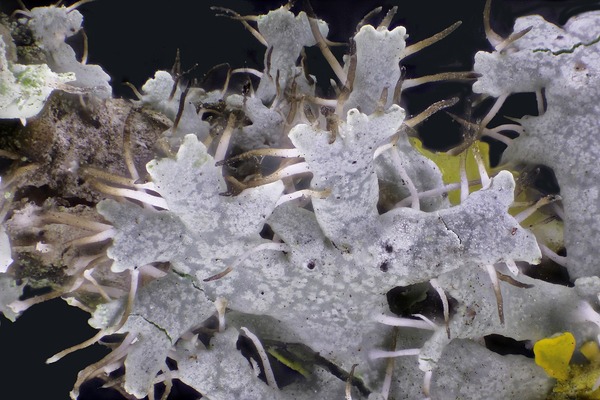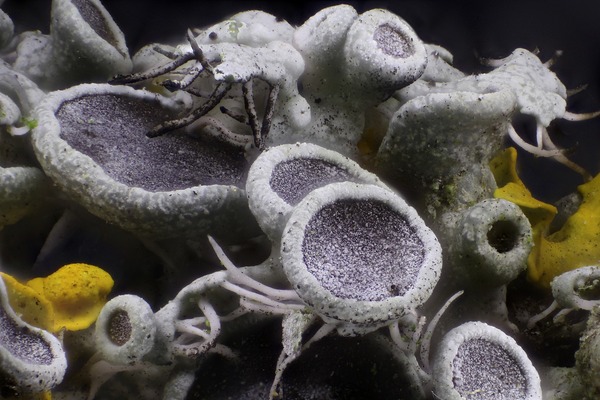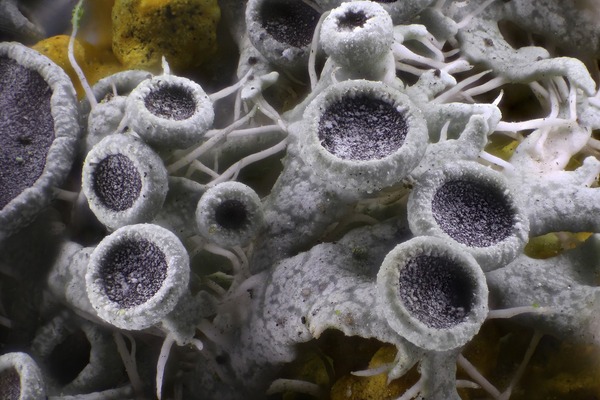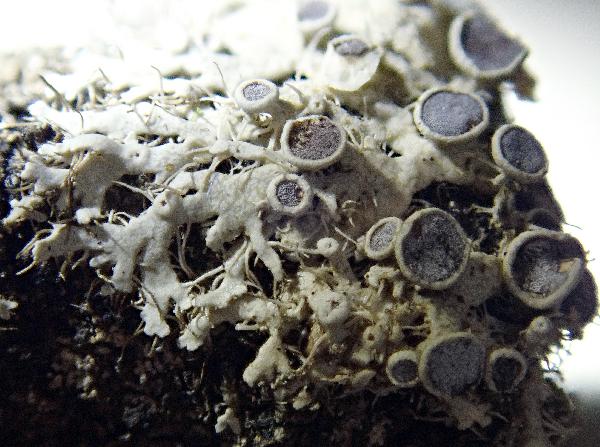Physcia leptalea (Ach.) DC.
in Lamarck & de Candolle, Fl. Franç., ed. 3, 2: 395, 1805. Basionym: Lichen leptaleus Ach. - Lichenogr. Suec. Prodr.: 108, 1799.
Synonyms: Lichen semipinnatus J. F. Gmel.; Physcia semipinnata (J. F. Gmel.) Moberg; Physcia subteres (Harm.) Lettau
Distribution: N - VG, Frl (Tretiach 1996), Ven, TAA (Nascimbene & al. 2007b, Zarabska & al. 2009), Lomb (Zocchi & al. 1997, Gheza & al. 2020, 2023), Piem (Castino 2004), Emil (Fariselli & al. 2020, Brackel 2025), Lig (Brunialti & al. 1999, Giordani & al. 2002, 2025, Brunialti & Giordani 2003, Giordani & Incerti 2008). C - Tosc (Loppi & Corsini 1995, Loppi & Putortì 1995, Loppi & al. 1995, 1996b, 1997, 1997b, 1998, 1998b, Loppi 1996, Loppi & De Dominicis 1996, Monaci & al. 1997, Loppi & Nascimbene 1998, Putortì & al. 1998, Paoli & Loppi 2001, Lorenzini & al. 2003, Loppi & Frati 2006, Pasquinelli & al. 2009, Putortì & Loppi 1999b, Brunialti & Frati 2010, Pasquinelli & Puccini 2010, Brunialti & al. 2012b, Paoli & al. 2012, Benesperi & al. 2013, Brackel 2015, Pasquinelli 2021, Frati & Brunialti 2023), Marc (Nimis & Tretiach 1999, Frati & Brunialti 2006, Brackel 2015, 2025), Umb (Ravera 1998, Nimis & Tretiach 1999, Ravera & al. 2006, Panfili 2007, Ciotti & al. 2009, Brackel 2015), Laz (Gigante & Petriccione 1995, Ravera & al. 1999, Massari & Ravera 2002, Nimis & Tretiach 2004, Ruisi & al. 2005, Munzi & al. 2007, Ravera 2008b, Ravera & Genovesi 2008, Zucconi & al. 2013, Brackel 2015), Abr (Recchia & al. 1993, Olivieri & al. 1997, 1997b, Loppi & al. 1999, Stofer 2006, Brackel 2015, Caporale & al. 2016, Corona & al. 2016, Gheza & al. 2021), Mol (Garofalo & al. 1999, Nimis & Tretiach 1999, Caporale & al. 2008, Ravera & al. 2010, Brackel 2015, 2020, Paoli & al. 2015, Caporale & Ravera 2020), Sar (Zedda 1995, 2002, 2002b, Nöske 2000, Zedda & Sipman 2001, Rizzi & al. 2011, Cossu 2013, Brackel & Berger 2019, Di Nuzzo & al. 2022). S - Camp (Garofalo & al. 1999, 2010, Aprile & al. 2002, 2003, 2003b, 2011, Nimis & Tretiach 2004, Nascimbene & al. 2010b, Catalano & al. 2012, 2016, Brunialti & al. 2013, Ravera & Brunialti 2013), Pugl (Nimis & Tretiach 1999, Brackel 2011, Gianfreda & Matino 2020), Bas (Bartoli & Puntillo 1998, Nimis & Tretiach 1999, Potenza 2006, Potenza & al. 2010 Brackel 2011, Cassola & al. 2025), Cal (Puntillo 1995, 1996, Puntillo & Puntillo 2004, Incerti & Nimis 2006, Brackel & Puntillo 2016), Si (Merlo 1993, 2004b, Nimis & al. 1994, Ottonello & Salone 1994, Ottonello & al. 1994, Grillo & Cristaudo 1995, Ottonello 1996, Grillo 1996, 1998, Ottonello & Romano 1997, Schicchi & al. 1997, Grillo & Caniglia 2004, 2006, Caniglia & Grillo 2006b, Stofer 2006 Falco Scampatelli 2005, Brackel 2008b, 2008c, Liistro & Cataldo 2011, Cataldo & Minissale 2015, Puglisi & Cataldo 2019, Campisi & al. 2020, Brackel & Puntillo 2023).
Description: Thallus foliose to subfruticose, heteromerous, dorsiventral, loosely attached, forming irregular patches. Lobes strap-shaped, (0.3-)0.5--1(-1.5) mm wide, more or less ascending to erect, white to very pale grey, white-maculate owing to breaks in the photobiont layer, with pale, but often dark-tipped marginal cilia, esorediate. Lower surface whitish, with very sparse brown-tipped rhizines towards the base, otherwise erhizinate. Upper cortex paraplectenchymatous; medulla very thin, white; lower cortex prosoplectenchymatous. Apothecia frequent, lecanorine, 2-3 mm across, with a brown-black, sometimes thinly pruinose disc and a rather thick, smooth thalline margin. Epithecium brown; hymenium and hypothecium colourless; paraphyses slender, simple or forked in upper part, the apical cells clavate, with a thin, dark brown cap. Asci 8-spored, clavate, the K/I+ blue tholus penetrated by a faintly amyloid apical cushion with parallel or diverging flanks, the wall K/I-, surrounded by a K/I+ blue outer layer, Lecanora-type. Ascospores 1-septate, brown, ellipsoid, 15-23 x 6-10 µm, the wall thickened at apex and at septum, Physcia-type. Pycnidia dark, semi-immersed. Conidia bacilliform, 4-6 x 1 µm. Photobiont chlorococcoid. Spot tests: upper cortex K+ yellow (reaction often rather faint), C-, KC-, P- or P+ faintly yellow; medulla K-, C-, KC-, P-. Chemistry: upper cortex with atranorin. Note: a Mediterranean to mild-temperate lichen, most common on twigs of shrubs in Southern Italy, where it reaches the beech belt in the mountains.
Growth form: Foliose, narrow lobed
Substrata: bark
Photobiont: green algae other than Trentepohlia
Reproductive strategy: mainly sexual
Commonnes-rarity: (info)
Alpine belt: absent
Subalpine belt: absent
Oromediterranean belt: absent
Montane belt: very rare
Submediterranean belt: rare
Padanian area: extremely rare
Humid submediterranean belt: rather common
Humid mediterranean belt: common
Dry mediterranean belt: rare
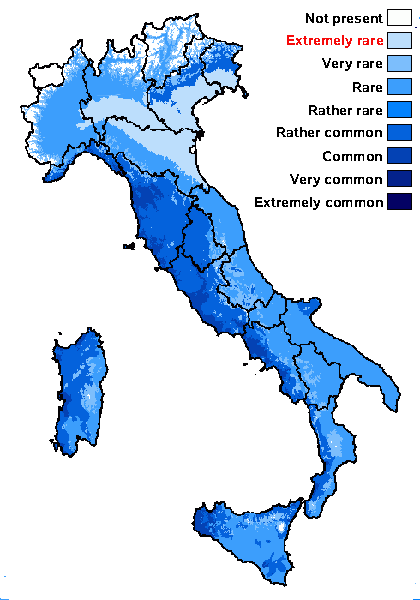
Predictive model
Herbarium samples
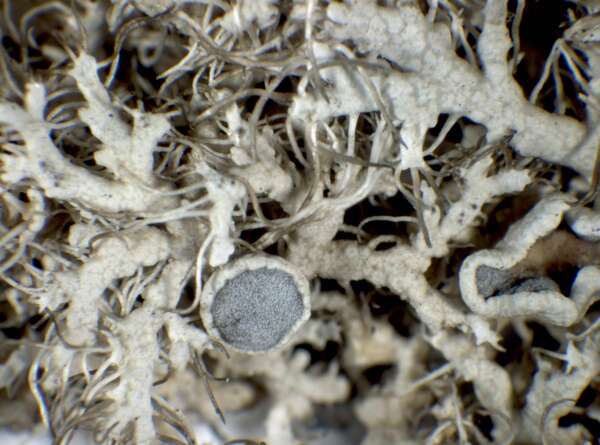

P.L. Nimis; Owner: Department of Life Sciences, University of Trieste
Herbarium: TSB (34322)
2001/12/24
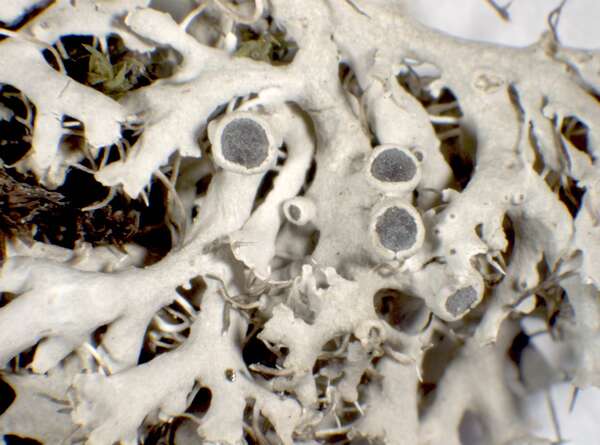

P.L. Nimis; Owner: Department of Life Sciences, University of Trieste
Herbarium: TSB (13030)
2001/12/05
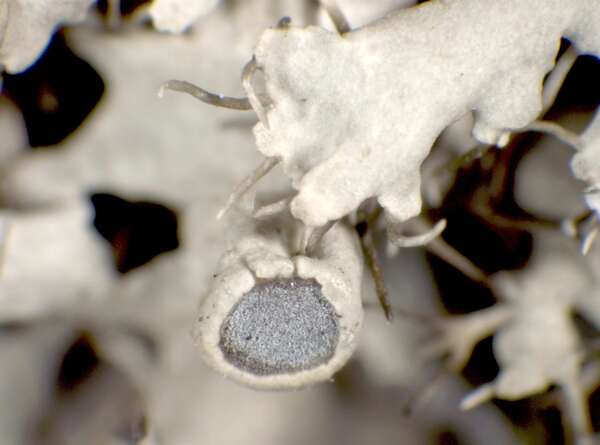

P.L. Nimis; Owner: Department of Life Sciences, University of Trieste
Herbarium: TSB (13030)
2001/12/05
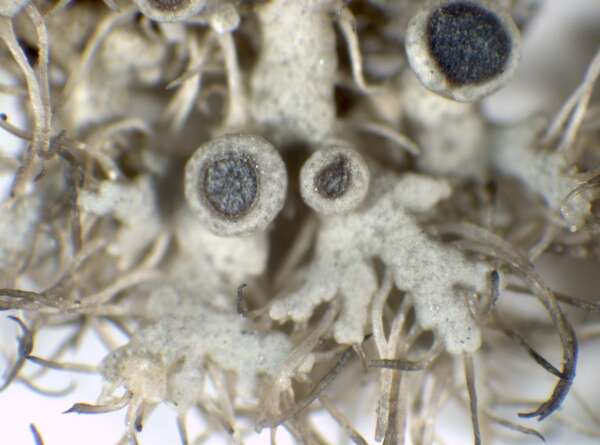

P.L. Nimis; Owner: Department of Life Sciences, University of Trieste
Herbarium: TSB (34322)
2001/12/24
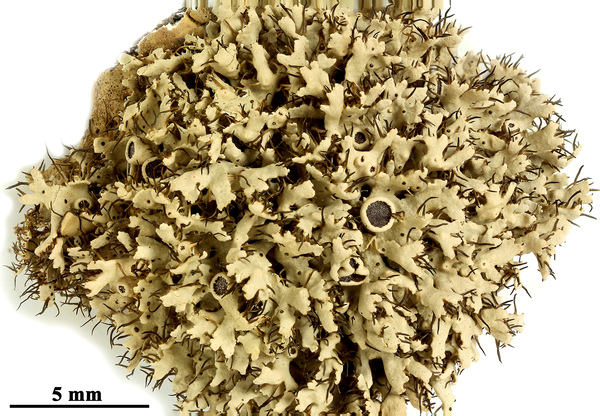

Felix Schumm – CC BY-SA 4.0
[8111], Spanien, Kanarische Inseln, Gran Canaria, auf Pinus canariensis we Unterseite stlich von Artenara in Richtung Pinar de Tamadaba; N 28°01.448', W 15°39.201', 1134 m. Leg. et det. F. Schumm, 28.12.2000
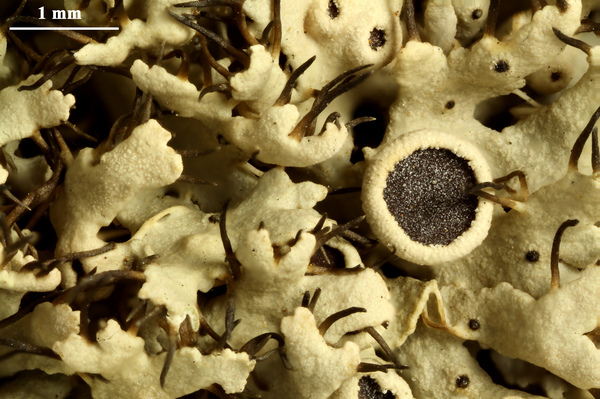

Felix Schumm – CC BY-SA 4.0
[8111], Spanien, Kanarische Inseln, Gran Canaria, auf Pinus canariensis we Unterseite stlich von Artenara in Richtung Pinar de Tamadaba; N 28°01.448', W 15°39.201', 1134 m. Leg. et det. F. Schumm, 28.12.2000
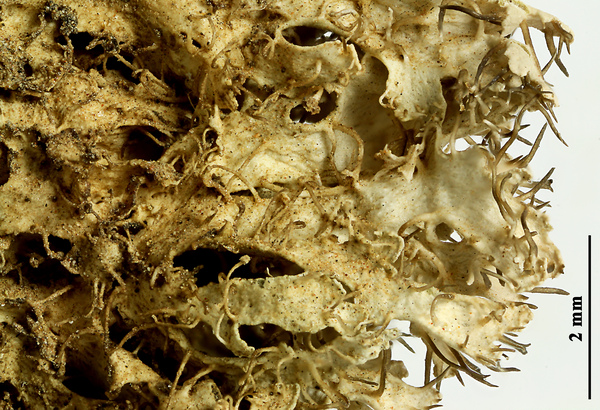

Felix Schumm – CC BY-SA 4.0
[8111], Spanien, Kanarische Inseln, Gran Canaria, auf Pinus canariensis we Unterseite stlich von Artenara in Richtung Pinar de Tamadaba; N 28°01.448', W 15°39.201', 1134 m. Leg. et det. F. Schumm, 28.12.2000
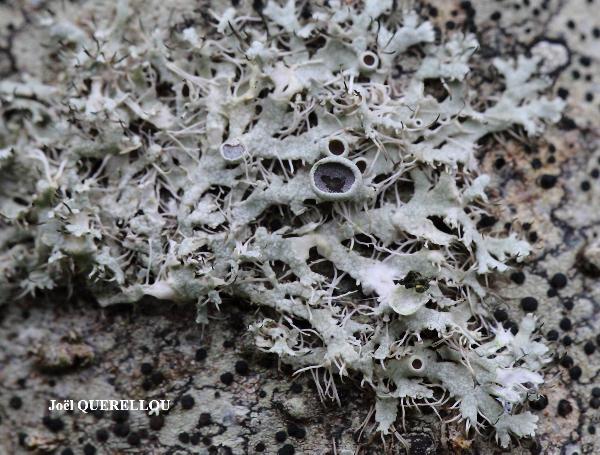
Joël Querellou - Source: http://www.lichensmaritimes.org/index.php?task=fiche&lichen=325&lang=en
France, Brest
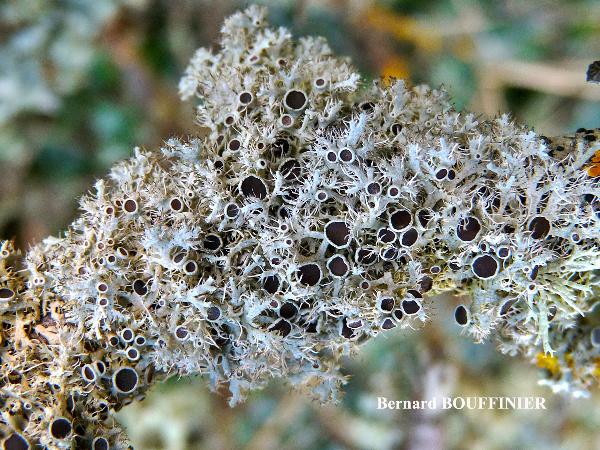
Bernard Bouffinier - Source: http://www.lichensmaritimes.org/index.php?task=fiche&lichen=325&lang=en
France, Kerloc'h

Bernard Bouffinier - Source: http://www.lichensmaritimes.org/index.php?task=fiche&lichen=325&lang=en
France, Kerloc'h
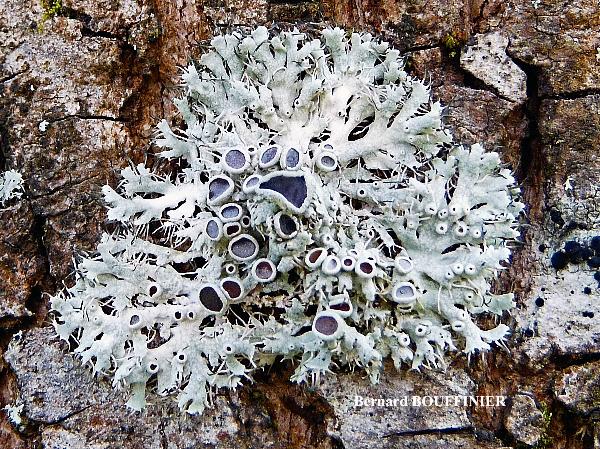
Bernard Bouffinier - Source: http://www.lichensmaritimes.org/index.php?task=fiche&lichen=325&lang=en
France, Le Faou

Bernard Bouffinier - Source: http://www.lichensmaritimes.org/index.php?task=fiche&lichen=325&lang=en
France, Le Faou
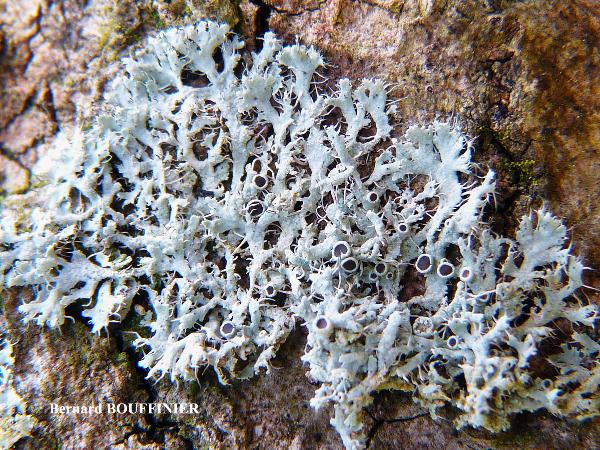
Bernard Bouffinier - Source: http://www.lichensmaritimes.org/index.php?task=fiche&lichen=325&lang=en
France, Terenez
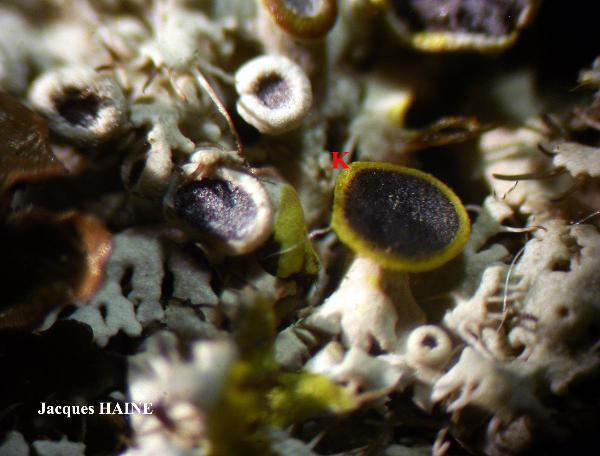
Jacques Haine - Source: http://www.lichensmaritimes.org/index.php?task=fiche&lichen=325&lang=en
France, Drôme Provençale
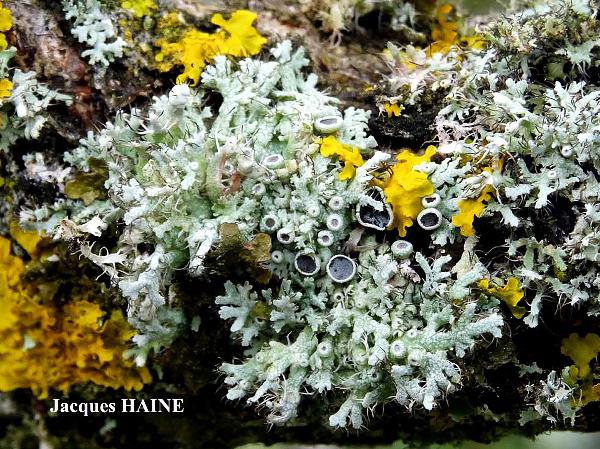
Jacques Haine - Source: http://www.lichensmaritimes.org/index.php?task=fiche&lichen=325&lang=en
France, Drôme Provençale

Jacques Haine - Source: http://www.lichensmaritimes.org/index.php?task=fiche&lichen=325&lang=en
France, Drôme Provençale
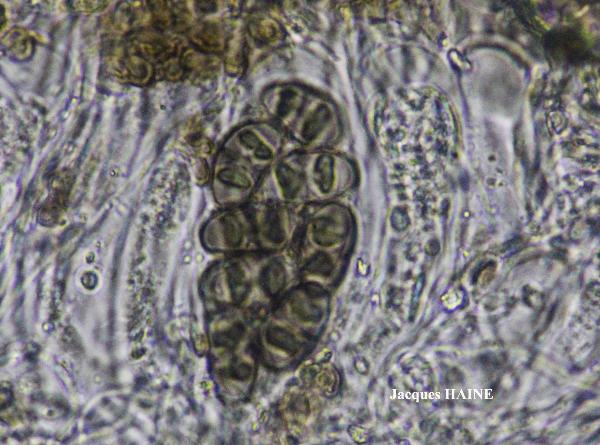
Jacques Haine - Source: http://www.lichensmaritimes.org/index.php?task=fiche&lichen=325&lang=en
France, Drôme Provençale

Jacques Haine - Source: http://www.lichensmaritimes.org/index.php?task=fiche&lichen=325&lang=en
France, Drôme Provençale

Jacques Haine - Source: http://www.lichensmaritimes.org/index.php?task=fiche&lichen=325&lang=en
France, Drôme Provençale
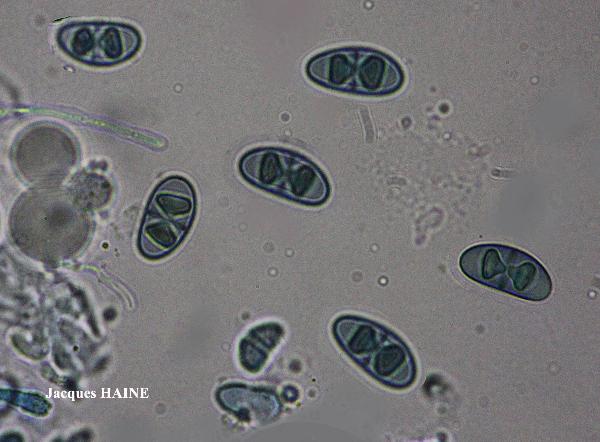
Jacques Haine - Source: http://www.lichensmaritimes.org/index.php?task=fiche&lichen=325&lang=en
France, Drôme Provençale
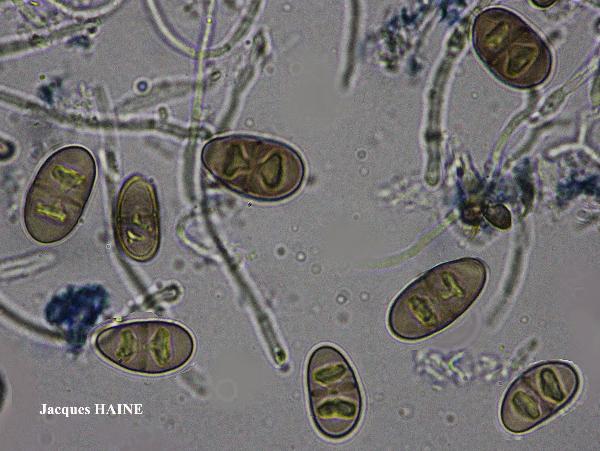
Jacques Haine - Source: http://www.lichensmaritimes.org/index.php?task=fiche&lichen=325&lang=en
France, Drôme Provençale
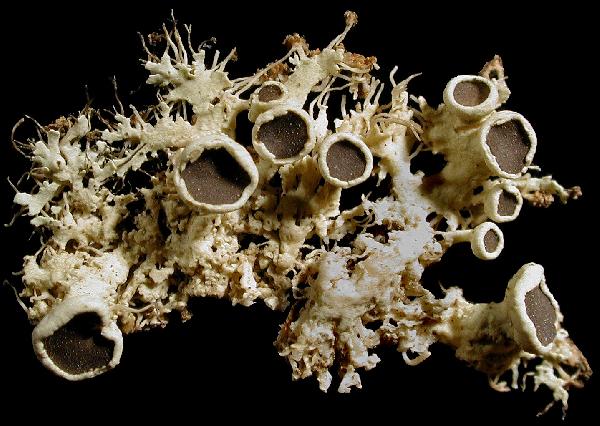
Ulrich Kirschbaum CC BY-SA 4.0 - Source: https://www.thm.de/lse/ulrich-kirschbaum/flechtenbilder
Spain; Canary Islands: Tenerife. (Collected by B. Bauch).

Ulrich Kirschbaum CC BY-SA 4.0 - Source: https://www.thm.de/lse/ulrich-kirschbaum/flechtenbilder
Spain; Canary Islands: Tenerife. (Collected by B. Bauch).
Growth form: Foliose, narrow lobed
Substrata: bark
Photobiont: green algae other than Trentepohlia
Reproductive strategy: mainly sexual
Commonnes-rarity: (info)
Alpine belt: absent
Subalpine belt: absent
Oromediterranean belt: absent
Montane belt: very rare
Submediterranean belt: rare
Padanian area: extremely rare
Humid submediterranean belt: rather common
Humid mediterranean belt: common
Dry mediterranean belt: rare

Predictive model
| Herbarium samples |


P.L. Nimis; Owner: Department of Life Sciences, University of Trieste
Herbarium: TSB (34322)
2001/12/24


P.L. Nimis; Owner: Department of Life Sciences, University of Trieste
Herbarium: TSB (13030)
2001/12/05


P.L. Nimis; Owner: Department of Life Sciences, University of Trieste
Herbarium: TSB (13030)
2001/12/05


P.L. Nimis; Owner: Department of Life Sciences, University of Trieste
Herbarium: TSB (34322)
2001/12/24


Felix Schumm – CC BY-SA 4.0
[8111], Spanien, Kanarische Inseln, Gran Canaria, auf Pinus canariensis we Unterseite stlich von Artenara in Richtung Pinar de Tamadaba; N 28°01.448', W 15°39.201', 1134 m. Leg. et det. F. Schumm, 28.12.2000


Felix Schumm – CC BY-SA 4.0
[8111], Spanien, Kanarische Inseln, Gran Canaria, auf Pinus canariensis we Unterseite stlich von Artenara in Richtung Pinar de Tamadaba; N 28°01.448', W 15°39.201', 1134 m. Leg. et det. F. Schumm, 28.12.2000


Felix Schumm – CC BY-SA 4.0
[8111], Spanien, Kanarische Inseln, Gran Canaria, auf Pinus canariensis we Unterseite stlich von Artenara in Richtung Pinar de Tamadaba; N 28°01.448', W 15°39.201', 1134 m. Leg. et det. F. Schumm, 28.12.2000

Joël Querellou - Source: http://www.lichensmaritimes.org/index.php?task=fiche&lichen=325&lang=en
France, Brest

Bernard Bouffinier - Source: http://www.lichensmaritimes.org/index.php?task=fiche&lichen=325&lang=en
France, Kerloc'h

Bernard Bouffinier - Source: http://www.lichensmaritimes.org/index.php?task=fiche&lichen=325&lang=en
France, Kerloc'h

Bernard Bouffinier - Source: http://www.lichensmaritimes.org/index.php?task=fiche&lichen=325&lang=en
France, Le Faou

Bernard Bouffinier - Source: http://www.lichensmaritimes.org/index.php?task=fiche&lichen=325&lang=en
France, Le Faou

Bernard Bouffinier - Source: http://www.lichensmaritimes.org/index.php?task=fiche&lichen=325&lang=en
France, Terenez

Jacques Haine - Source: http://www.lichensmaritimes.org/index.php?task=fiche&lichen=325&lang=en
France, Drôme Provençale

Jacques Haine - Source: http://www.lichensmaritimes.org/index.php?task=fiche&lichen=325&lang=en
France, Drôme Provençale

Jacques Haine - Source: http://www.lichensmaritimes.org/index.php?task=fiche&lichen=325&lang=en
France, Drôme Provençale

Jacques Haine - Source: http://www.lichensmaritimes.org/index.php?task=fiche&lichen=325&lang=en
France, Drôme Provençale

Jacques Haine - Source: http://www.lichensmaritimes.org/index.php?task=fiche&lichen=325&lang=en
France, Drôme Provençale

Jacques Haine - Source: http://www.lichensmaritimes.org/index.php?task=fiche&lichen=325&lang=en
France, Drôme Provençale

Jacques Haine - Source: http://www.lichensmaritimes.org/index.php?task=fiche&lichen=325&lang=en
France, Drôme Provençale

Jacques Haine - Source: http://www.lichensmaritimes.org/index.php?task=fiche&lichen=325&lang=en
France, Drôme Provençale

Ulrich Kirschbaum CC BY-SA 4.0 - Source: https://www.thm.de/lse/ulrich-kirschbaum/flechtenbilder
Spain; Canary Islands: Tenerife. (Collected by B. Bauch).

 INDEX FUNGORUM
INDEX FUNGORUM
 GBIF
GBIF
 DOLICHENS
DOLICHENS
